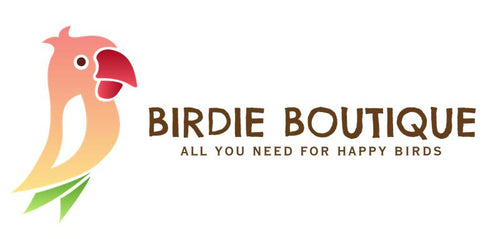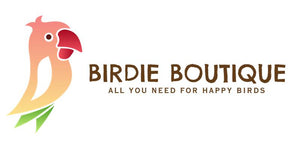Light Up Your Bird's Life
The Doctor Is In! Light Up Your Bird's Life!
Have you stopped to look in your pet bird’s living area and considered how much bright light your bird is getting? Light is often taken for granted and an overlooked environmental necessity for maintaining a happy healthy bird.
Psittacine birds (parrots) and other pet birds (hereto forth referred to as “birds”) do not see well in dim light and prefer to be in bright light. In dim light, these birds are easily startled, recoil, or even bite when being removed from the cage or taken into a dim lit room. In dim light they will also exhibit a decreased appetite and lower activity level.
The decreased ability to see in dim light is due to having a low number of rods, which are cells in the eye that function to capture small amounts of light, giving the ability to see in low light conditions. In contrast to these birds, owls, whooooo do see well in very low light conditions, have a large number rods.
The cells in the eye that provide the ability to see color are called cones. Parrots and other birds have many cones, giving them the ability to see colors. Many birds also have specialized cones that give the ability to see in the ultraviolet (UV) spectrum. The presence of cones and UV cones birds an acute ability to see color.
Indoor light is typically provided by electric lighting alone, or in conjunction with natural light passing through glass windows or doors. Incandescent or fluorescent lighting, even when supplemented with such natural light, does not provide the quality of bright light necessary for a bird to be healthy, comfortable, and feel secure. This quality of light should include both bright white visible light and UV light.
To improve the quality of indoor light it is necessary to provide full-spectrum lighting. Full-spectrum lights emit both bright white visible light and UV light. For indoor birds, artificial UV light is the only source of UV light because regular room lights (incandescent and fluorescent types) do not produce light in the UV spectrum, and glass doors and windows are designed to filter out most if not all of the natural UV light as a way to insulate the home.
Not all UV lights are the same. Some are for use by humans (OTT light), different ones are for use with plants (horticulture bulbs), different ones are for use with reptiles (herpetological bulbs), and others are for use with fish (aquarium bulbs). Even if stated on the box, proclaimed by the pet store clerk or by the manufacturer, none of these are appropriate for birds because they do not provide the wavelengths of UV light that are beneficial to birds.
Owners should provide only UV light sources designed specifically for birds. The ZooMed AvianSun Lamp & Bulb is the only one that I recommend for birds. I base my recommendation on the large emission of bright white visible light, the quality and quantity of the UV light emitted, the life-length of the bulb is longer than average, the research performed by ZooMed to determine the light’s quality & effectiveness, the design & craftsmanship of the lamp, and its affordability. There are other brands available that are sold as bird-specific. However, the amount of UV light emitted is lower, some produce too much heat, and they have a shorter bub life.
To receive the benefits from natural outdoor UV light, birds need to be exposed to indirect sunlight for 30-45 minutes per day. It is impractical for indoor birds to rely exclusively on natural UV light because they cannot be outdoors enough to benefit from natural UV light exposure. Taking them outside for exposure to natural light also exposes them to predators, and risks escape and overheating. Cold weather is also an impractical time to take them out for extended periods of time. With indoor artificial UV light, birds need 2-4 hours of exposure per day. I recommend using a timer set for the light come on for 1-2 hours in the morning just after sun-up, go off, then come back on for 1-2 hours in the evening, and go off just before sundown. This schedule keeps them on the natural light cycle and does not interrupt their daily eating, sleeping, and other routines.
UV light is important to birds for three primary reasons. Firstly, UV light improves sight ability for birds. Birds have four different color cones in the eye: red, green, blue, and UV. Without UV light the UV color cones are not being stimulated and birds are considered colorblind. Humans have only three color cones: red, green, and blue. In comparison, if humans were missing a color cone, for instance the red cone, then that person would be considered red-green colorblind. UV light allows birds to see colors that are more natural and recognizable to them. Often birds will eat foods they have rejected before, or accept new toys that had frightened them before.
Secondly, UV light provides birds an important health benefit. It provides them with a natural source of vitamin D3. The oil from the preen gland contains a precursor of vitamin D3. The oil is spread through the feathers when the bird is preening. When the oil on the feathers is exposed to UV light, the precursor is converted to vitamin D3. As the bird preens, this natural vitamin D3 is ingested. Consuming natural vitamin D3 is important even if your bird eats a formulated diet, such as pellets, to balance the vitamin D3 in correct ratios with calcium, phosphorous, and trace minerals. Vitamin D3 is vital in many physiological processes such as uptake and utilization of calcium. Vitamin D3 deficiency can present with the same symptoms as calcium deficiency, including metabolic bone disease (rickets), soft-shelled eggs, egg binding, and mild to severe tremors, ataxia (wobbling), and even seizures.
Thirdly, UV light improves the quality, strength, and color of the feathers and beak. Healthy feathers are important because they regulate body temperature, and protect the body against mechanical damage, actinic sunrays, excessive water, and environmental temperature changes. Healthy feathers also give them the unique ability to fly.
For these reasons, providing UV light will dramatically improve your bird’s quality of life.
-By Dr. Gregory Burkett

